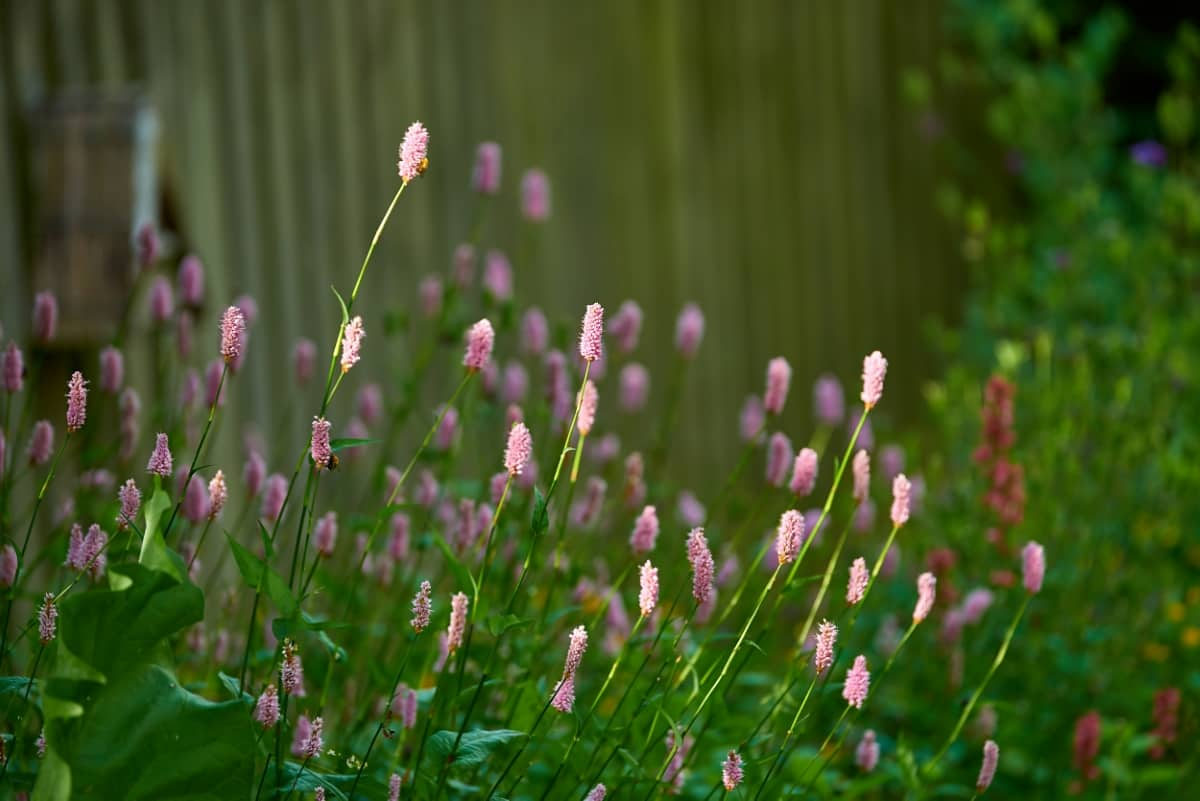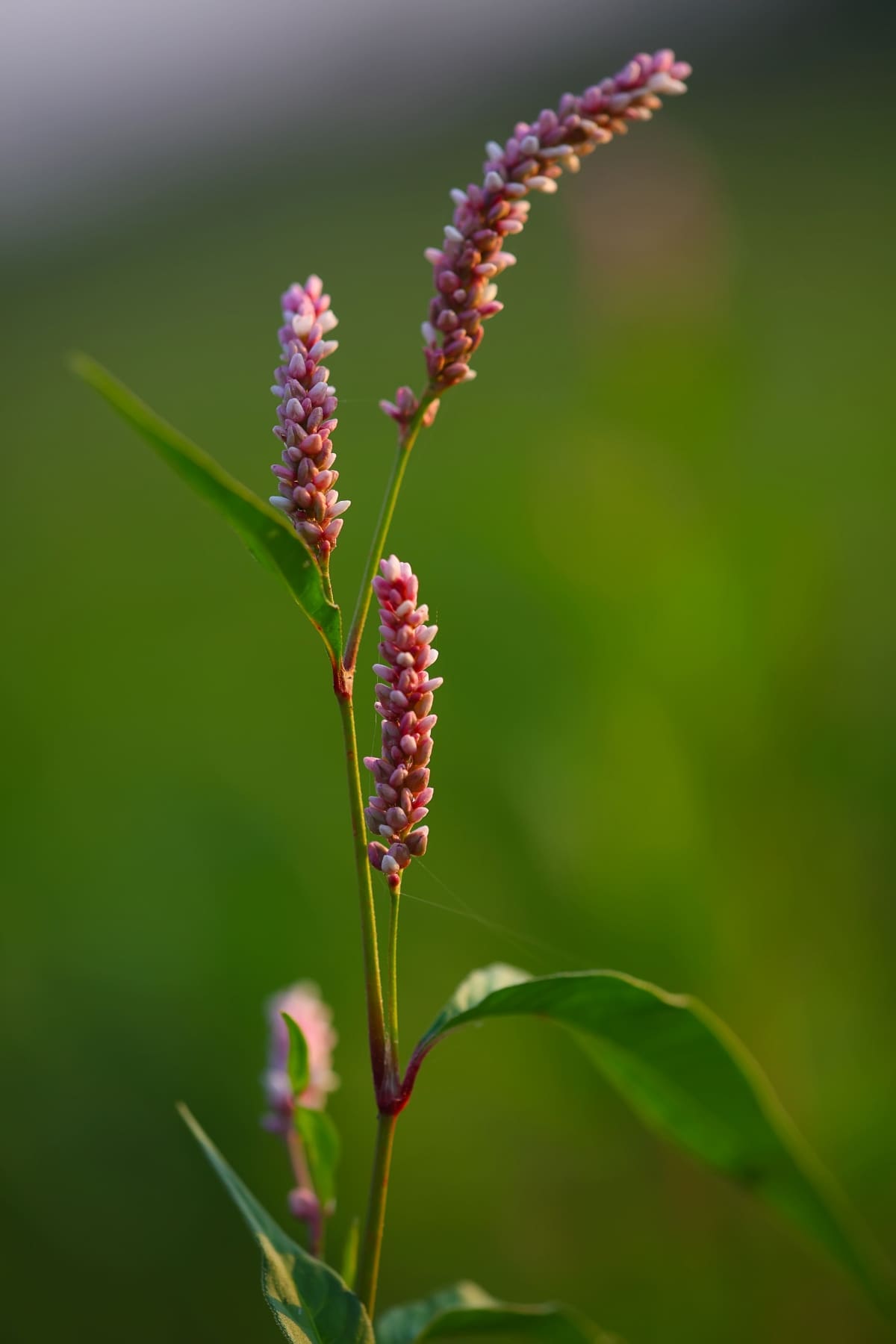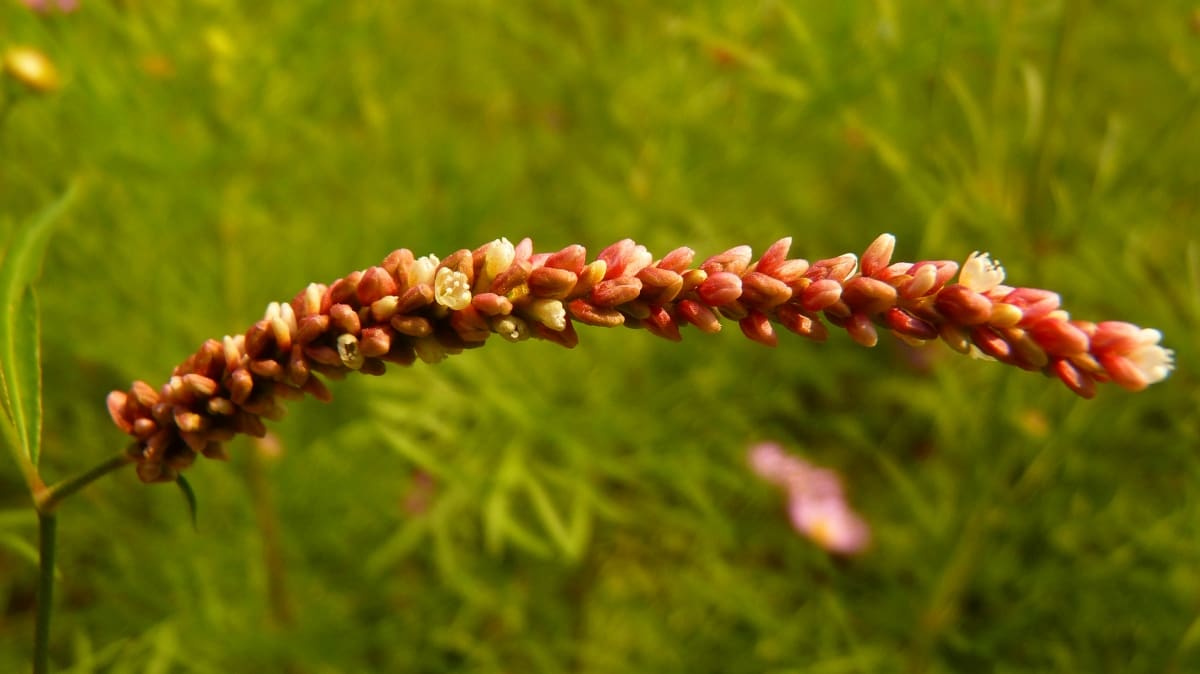Water Pepper, also known as Persicaria hydropiper, is a fascinating plant that thrives in moist locations. Its unique name comes from the spicy taste of its leaves and stems when consumed. This perennial herb belongs to the Polygonaceae family. Water Pepper plants have natural pest-repellent properties, making them an excellent addition to any garden or farm.

How to Grow Organic Water Pepper
Choosing the Best Organic Soil for Water Pepper Cultivation
This plant thrives in moist conditions, so selecting well-draining soil that retains moisture without becoming waterlogged is important. Adding compost to the soil can enrich its fertility and improve its structure. If the garden has heavy clay soil, consider amending it with organic materials like peat moss or aged compost to improve drainage and prevent waterlogging.
Step-By-Step Instructions for Growing Water Pepper Plants
Choosing the Right Location – When it comes to growing organic Water Pepper plants, selecting the right location is crucial. These plants thrive in moist environments, so choose an area that receives partial shade or dappled sunlight. If you have a pond or a spot with consistently wet soil, that’s even better.
Preparing the Soil – Water Pepper prefers loamy or sandy soil with good drainage. Add organic matter like compost to improve fertility and water retention.
Planting Water Pepper Seeds – Sow Water Pepper seeds into the prepared soil at a depth of about ¼ inch. Space them around 6 inches apart to allow enough room for growth. Lightly cover the Water Pepper seeds with soil and gently pat it down.
Watering and Maintenance – Keep the newly planted seeds moist but avoid overwatering the Water Pepper as this can lead to rotting. Once they start sprouting, provide regular watering when needed to keep the soil consistently moist but not saturated.
Controlling Weeds – To prevent weeds from competing with your Water Pepper plants for nutrients and moisture, regularly remove any unwanted growth around them using hand-pulling or hoeing techniques.
Water Pepper Care Tips for Successful Cultivation
It’s important to choose the right location for your Water Pepper plants. They prefer moist environments, so consider planting them near a pond or in an area with consistent access to water. However, they can also thrive in sandy or loamy soils. When it comes to soil preparation for Water Pepper plants, make sure to amend the soil with organic matter.
Water Pepper plants require regular watering throughout their growing season. Regularly trim dead leaves or stems to encourage new growth and maintain an attractive appearance. Use organic fertilizers in Water Pepper plants rich in nitrogen to promote healthy growth and foliage production. Pests and diseases can be managed through organic pest control methods like neem oil spray or by introducing beneficial insects into your garden.
Natural Pest Control Methods for Water Pepper Plants
One effective way is attracting beneficial insects to your garden, like ladybugs, which feed on harmful pests like aphids and spider mites. Another natural pest control method is companion planting. You can repel unwanted pests by interplanting Water Pepper with herbs like basil or cilantro while adding flavor to your culinary creations.
Regularly inspecting your plants is also crucial in preventing pest infestations. Look out for any signs of damage or unusual growth patterns that may indicate the presence of pests. If you spot any pests, remove them manually or spray them with water and mild soap. Creating physical barriers around your Water Pepper plants can also help deter pests. A healthy Water Pepper plant is more resistant to attacks from common garden pests.
Organic Fertilizers for Promoting Healthy Water Pepper Growth
- Compost: A well-aged compost is one of the best organic fertilizers for Water Pepper plants. It enriches the soil improves moisture retention, and slowly releases nutrients.
- Manure: Another excellent choice is aged animal manure, such as a cow or chicken manure. It supplies nitrogen, phosphorus, potassium, and other micronutrients necessary for vigorous growth.
- Fish Emulsion: This natural liquid fertilizer derived from fish waste contains high levels of nitrogen and trace minerals that support healthy foliage development in Water Pepper plants.
- Bone Meal: A slow-release fertilizer made from ground bones rich in phosphorus and calcium boosts root development in Water Pepper plants while strengthening stems.
Proper Watering Techniques for Water Pepper Plants
It’s important to keep the soil consistently moist but not overly saturated. Water Pepper plants prefer evenly moist soil, so provide enough water without drowning them. A drip irrigation system with a narrow spout is best to avoid overwatering. These methods allow for precise and targeted watering directly at the base of the plant, minimizing wastage and preventing excessive moisture accumulation on leaves and stems, which could lead to rotting or disease.
In case you missed it: How to Grow and Care for Organic Peppermint: Guide for Planting to Harvest

Consider applying mulch around the plant base during hot summer or dry climates. Organic materials like straw or wood chips work well as mulch options. In addition to regular watering, pay attention to weather conditions and adjust accordingly.
Preventing Diseases and Common Issues in Water Pepper Cultivation
Practicing crop rotation is essential for preventing diseases in your garden overall. Avoid planting Water Peppers in the same location year after year, as this increases the likelihood of disease buildup in the soil. It’s crucial to provide proper air circulation around your Water Pepper plants. Good airflow helps prevent fungal diseases such as powdery mildew or leaf spot.
Ensure adequate spacing between plants and trim any overcrowded foliage. Another major issue in Water Pepper cultivation is overwatering. While these plants require moist soil, excessive watering can lead to fungal infections. Be sure to monitor soil moisture levels regularly and only water when necessary. Additionally, avoid wetting the leaves during irrigation to minimize the risk of disease spread.
Companion Plants for Water Pepper and Their Benefits in Organic Gardening
Borage – One great companion plant for Water Pepper is borage. Borage attracts pollinators like bees and butterflies to your garden and is a natural deterrent for pests like tomato hornworms and cabbage worms. Its beautiful blue flowers add a touch of color to your garden while providing shade for the delicate foliage of Water Pepper.
Marigolds – Marigolds emit a strong scent that repels aphids, nematodes, and other harmful insects. Planting marigolds around your Water Pepper can help protect them from insect infestations while adding vibrant blooms to your garden.
Chives – Chives have been known to deter Japanese beetles, and carrot rust flies when planted nearby. They also release compounds into the soil that improve its nutrient content, thus benefiting neighboring plants like Water Pepper.
Harvesting and Preserving Water Pepper Leaves and Stems
Wait until the plant has reached a height of at least 12 inches before you start harvesting. This ensures that the leaves and stems have developed their full flavor. Rather than cutting off entire branches, selectively pluck individual leaves or stems as needed. This allows the plant to continue growing new foliage throughout the season.
In case you missed it: 10 Best Hot Peppers to Grow in Your Garden: Types and Varieties

Start with the lower leaves and work your way upwards. The younger leaves are more tender and flavorful than the older ones. If you have an abundance of Water Pepper, consider preserving some for later use. One popular method is drying them in a cool, dry place or using a food dehydrator. Once dried, store in a container away from sunlight.
Conclusion
Water Pepper can be a beautiful addition to any garden or landscape design. It has slender, red-tinged stems with lance-shaped leaves that add texture and visual interest to the surroundings. Planting Water Peppers near susceptible crops or flowers can deter pests like aphids and caterpillars without relying on harmful chemical pesticides.
- Feed Your Flock for Less: Top 10 Tips to Save on Chicken Feed
- Ultimate Guide to Ossabaw Island Hog: Breeding, Raising, Diet, and Care
- Hatching Answers: The Top 10 Reasons Your Chickens Aren’t Laying Eggs
- Eggs and Economics: Breaking Down the Cost of Raising Backyard Chickens
- Defend Your Greens: Proven Methods to Keep Iguanas Out of Your Garden
- Ultimate Guide to Cinnamon Queen Chicken: A Comprehensive Guide for Beginners
- Ultimate Guide to California Tan Chicken: Breeding, Raising, Diet, Egg-Production and Care
- Ultimate Guide to Marsh Daisy Chicken: Breeding, Raising, Diet, and Care
- 10 Types of Chicken Farming Businesses You Can Start for Profits